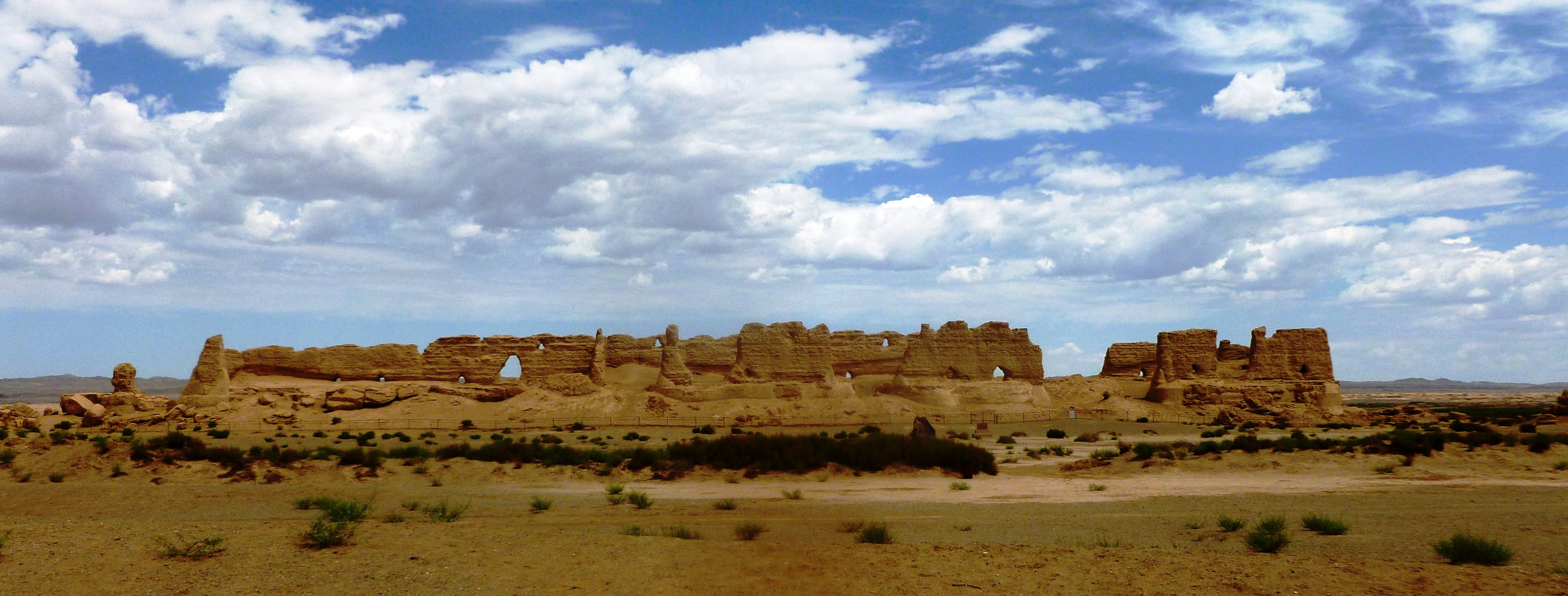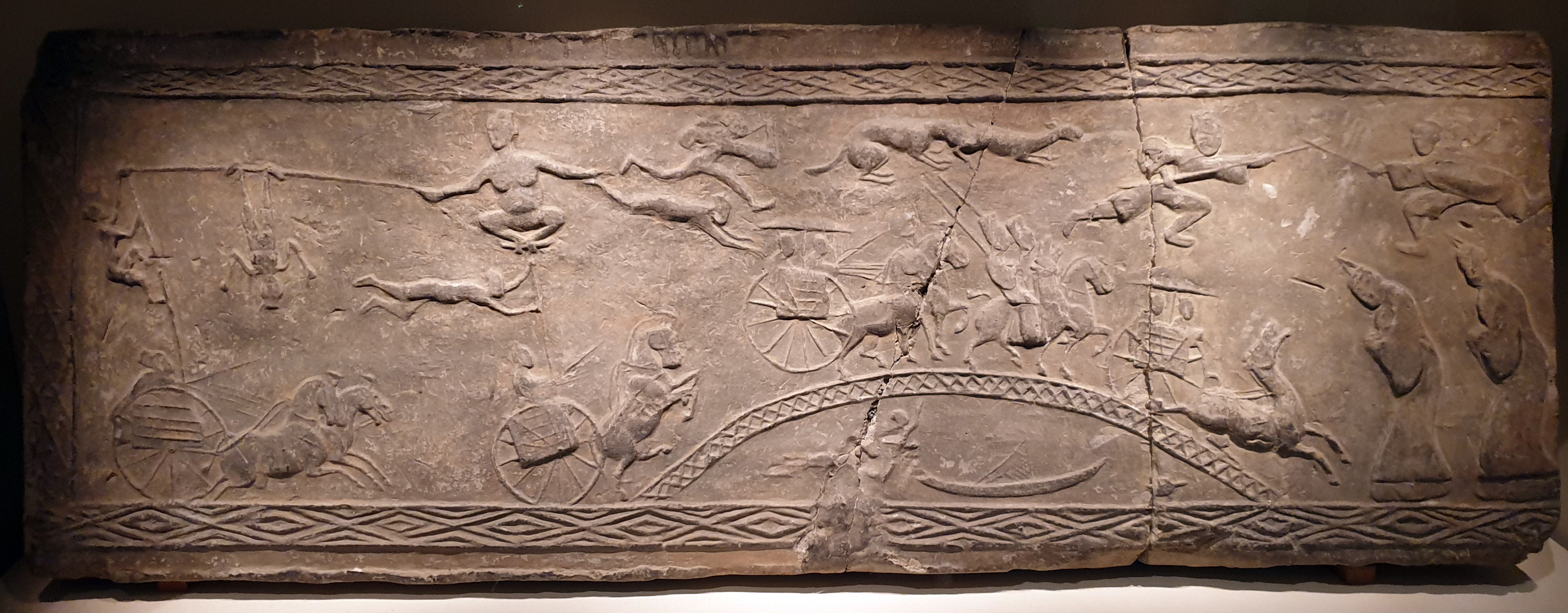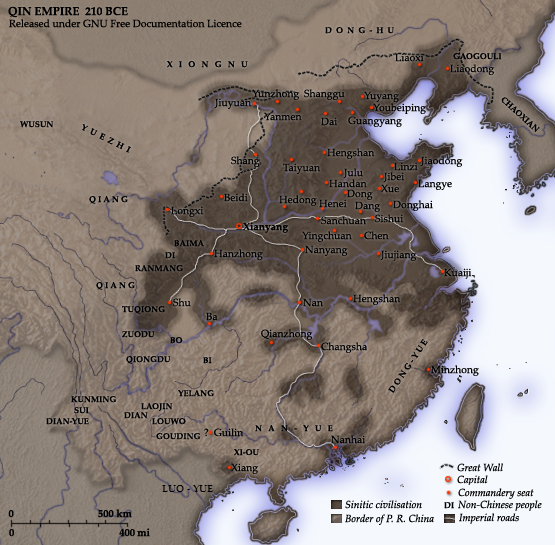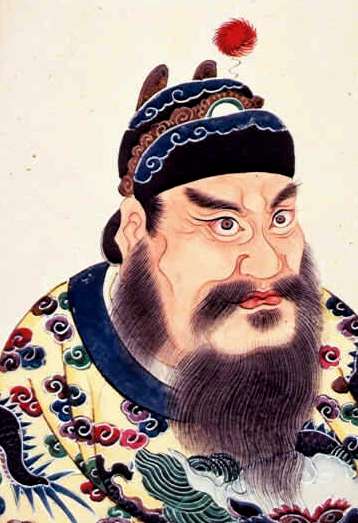|
Mo Ti
Mozi, personal name Mo Di, was a Chinese philosopher, logician, and founder of the Mohist school of thought, making him one of the most important figures of the Warring States period (221 BCE). Alongside Confucianism, Mohism became the most prominent, organized schools of the Hundred Schools of Thought throughout the period. The ''Mozi'' is an anthology of writings traditionally attributed to Mozi and to his followers. Born in what is now Tengzhou, Shandong, Mozi and his followers argued strongly against both Confucianism and Taoism, with a philosophy emphasizing universal love, social order, the will of Heaven, sharing, and honoring the worthy. Mohism was actively developed and practiced across Warring States–era China, but fell out of favor following the establishment of the Qin dynasty in 221 BCE. While tradition assumes the destruction of many Mohist texts in 213 BCE as part of Emperor Qin Shi Huang's burning of books and burying of scholars, traces o ... [...More Info...] [...Related Items...] OR: [Wikipedia] [Google] [Baidu] |
Chinese Philosophy
Chinese philosophy (Simplified Chinese characters, simplified Chinese: 中国哲学; Traditional Chinese characters, traditional Chinese: 中國哲學) refers to the philosophical traditions that originated and developed within the historical and cultural context of China. It encompasses systematic reflections on issues such as existence, knowledge, ethics, and politics. Evolving over more than two millennia, Chinese philosophy includes classical traditions such as Confucianism, Taoism, Daoism, and Buddhism, as well as modern responses to Western philosophical currents. As a cultural form of philosophy, it addresses universal philosophical concerns while also reflecting the specific historical and social conditions of China. The historical development of Chinese philosophy began during the Spring and Autumn period, Spring and Autumn and Warring States period, Warring States periods, a time known as the "Hundred Schools of Thought". Major schools such as Confucianism, Taoism, Da ... [...More Info...] [...Related Items...] OR: [Wikipedia] [Google] [Baidu] |
Confucianism
Confucianism, also known as Ruism or Ru classicism, is a system of thought and behavior originating in ancient China, and is variously described as a tradition, philosophy, Religious Confucianism, religion, theory of government, or way of life. Founded by Confucius in the Hundred Schools of Thought era (c. 500 BCE), Confucianism integrates philosophy, ethics, and social governance, with a core focus on virtue, Harmonious Society, social harmony, and Filial piety, familial responsibility. Confucianism emphasizes virtue through self-cultivation and communal effort. Key virtues include ''Ren (philosophy), ren'' (benevolence), ''Yi (philosophy), yi'' (righteousness), ''Li (Confucianism), li'' (propriety), ''Wisdom, zhi'' (wisdom), and ''Xin (virtue), xin'' (sincerity). These values, deeply tied to the notion of ''tian'' (heaven), present a worldview where human relationships and social order are manifestations of sacred moral principles.. While Confucianism does not emphasize an ... [...More Info...] [...Related Items...] OR: [Wikipedia] [Google] [Baidu] |
Thousand Character Classic
The ''Thousand Character Classic'' (), also known as the ''Thousand Character Text'', is a Chinese poem that has been used as a primer for teaching Chinese characters to children from the sixth century onward. It contains exactly one thousand characters, each used only once, arranged into 250 lines of four characters apiece and grouped into four line rhyming stanzas to facilitate easy memorization. It is sung, akin to alphabet songs for phonetic writing systems. Along with the '' Three Character Classic'' and the ''Hundred Family Surnames'', it formed the basis of traditional literacy training in the Sinosphere. The first line is ''Tian di xuan huang'' () and the last line, ''Yan zai hu ye'' () explains the use of the grammatical particles , , , and . History There are several stories of the work's origin. One says that Emperor Wu of the Liang dynasty (r. 502–549) commissioned Zhou Xingsi (, 470–521) to compose this poem for his prince to practice calligraphy. Another sa ... [...More Info...] [...Related Items...] OR: [Wikipedia] [Google] [Baidu] |
Western Han
The Han dynasty was an imperial dynasty of China (202 BC9 AD, 25–220 AD) established by Liu Bang and ruled by the House of Liu. The dynasty was preceded by the short-lived Qin dynasty (221–206 BC) and a warring interregnum known as the Chu–Han Contention (206–202 BC), and it was succeeded by the Three Kingdoms period (220–280 AD). The dynasty was briefly interrupted by the Xin dynasty (9–23 AD) established by the usurping regent Wang Mang, and is thus separated into two periods—the Western Han (202 BC9 AD) and the Eastern Han (25–220 AD). Spanning over four centuries, the Han dynasty is considered a golden age in Chinese history, and had a permanent impact on Chinese identity in later periods. The majority ethnic group of modern China refer to themselves as the " Han people" or "Han Chinese". The spoken Chinese and written Chinese are referred to respectively as the "Han language" and " Han characters". ... [...More Info...] [...Related Items...] OR: [Wikipedia] [Google] [Baidu] |
Han Dynasty
The Han dynasty was an Dynasties of China, imperial dynasty of China (202 BC9 AD, 25–220 AD) established by Liu Bang and ruled by the House of Liu. The dynasty was preceded by the short-lived Qin dynasty (221–206 BC) and a warring interregnum known as the Chu–Han Contention (206–202 BC), and it was succeeded by the Three Kingdoms period (220–280 AD). The dynasty was briefly interrupted by the Xin dynasty (9–23 AD) established by the usurping regent Wang Mang, and is thus separated into two periods—the #Western Han (202 BC – 9 AD), Western Han (202 BC9 AD) and the #Eastern Han (25–220 AD), Eastern Han (25–220 AD). Spanning over four centuries, the Han dynasty is considered a Golden ages of China, golden age in Chinese history, and had a permanent impact on Chinese identity in later periods. The majority ethnic group of modern China refer to themselves as the "Han people" or "Han Chinese". The spoken Chinese ... [...More Info...] [...Related Items...] OR: [Wikipedia] [Google] [Baidu] |
Huainanzi
The ''Huainanzi'' is an ancient Chinese text made up of essays from scholarly debates held at the court of Liu An, Prince of Huainan, before 139 BCE. Compiled as a handbook for an enlightened sovereign and his court, the work attempts to define the conditions for a perfect socio-political order, derived mainly from a perfect ruler. With a notable Zhuangzi (book), Zhuangzi 'Taoist' influence, including Chinese folk religion, Chinese folk theories of yin and yang and Wuxing (Chinese philosophy), Wu Xing, the ''Huainanzi'' draws on Taoist, Legalism (Chinese philosophy), Legalist, Confucian, and Mohist concepts, but subverts the latter three in favor of a wu wei, less active ruler, as prominent in the early Han dynasty before the Emperor Wu of Han, Emperor Wu. The early Han authors of the Huainanzi likely did not yet call themselves Taoist, and differ from Taoism as later understood. But K.C. Hsiao and the work's modern translators still considered it a 'principle' example of Han ... [...More Info...] [...Related Items...] OR: [Wikipedia] [Google] [Baidu] |
Early Han Dynasty
The Han dynasty was an Dynasties of China, imperial dynasty of China (202 BC9 AD, 25–220 AD) established by Liu Bang and ruled by the House of Liu. The dynasty was preceded by the short-lived Qin dynasty (221–206 BC) and a warring interregnum known as the Chu–Han Contention (206–202 BC), and it was succeeded by the Three Kingdoms period (220–280 AD). The dynasty was briefly interrupted by the Xin dynasty (9–23 AD) established by the usurping regent Wang Mang, and is thus separated into two periods—the #Western Han (202 BC – 9 AD), Western Han (202 BC9 AD) and the #Eastern Han (25–220 AD), Eastern Han (25–220 AD). Spanning over four centuries, the Han dynasty is considered a Golden ages of China, golden age in Chinese history, and had a permanent impact on Chinese identity in later periods. The majority ethnic group of modern China refer to themselves as the "Han people" or "Han Chinese". The spoken Chinese ... [...More Info...] [...Related Items...] OR: [Wikipedia] [Google] [Baidu] |
Burning Of Books And Burying Of Scholars
The burning of books and burying of scholars was the purported Book burning, burning of texts in 213 BCE and live burial of 460 Confucian scholars in 212 BCE ordered by Chinese emperor Qin Shi Huang. The events were alleged to have destroyed philosophical treatises of the Hundred Schools of Thought, with the goal of strengthening the official Qin governing philosophy of Legalism (Chinese philosophy), Legalism. Modern historians doubt the details of the story, which first appeared more than a century later in the Han dynasty official Sima Qian's ''Records of the Grand Historian''. As a court scholar, Sima had every reason to denigrate the earlier emperor to flatter his own, but later Confucians did not question the story. According to the historian Ulrich Neininger, their message was, "If you take our life, Heaven will take the life of your dynasty." Modern scholars agree that Qin Shi Huang gathered and destroyed many works that he regarded as incorrect or subversive. He ord ... [...More Info...] [...Related Items...] OR: [Wikipedia] [Google] [Baidu] |
Qin Shi Huang
Qin Shi Huang (, ; February 25912 July 210 BC), born Ying Zheng () or Zhao Zheng (), was the founder of the Qin dynasty and the first emperor of China. He is widely regarded as the first ever supreme leader of a unitary state, unitary dynasties of China, dynasty in Chinese history. Rather than maintain the title of "Chinese king, king" ( ) or "suzerain#China, overlord" () borne by the previous rulers of Xia dynasty, Xia, Shang dynasty, Shang and Zhou dynasty, Zhou dynasties, he invented the title of "emperor" ( ), which would see continuous use by Chinese sovereigns and monarchy in China, monarchs for the next two millennia. Ying Zheng was born during the late Warring States period in Handan, the capital of Zhao (state), Zhao, to King Zhuangxiang of Qin, Prince Yiren and Queen Dowager Zhao, Lady Zhao. Prince Yiren was serving as an expendable hostage diplomacy, diplomatic hostage in Zhao at the time, but the wealthy merchant Lü Buwei saw potential in him and lobbied fo ... [...More Info...] [...Related Items...] OR: [Wikipedia] [Google] [Baidu] |
Qin Dynasty
The Qin dynasty ( ) was the first Dynasties of China, imperial dynasty of China. It is named for its progenitor state of Qin, a fief of the confederal Zhou dynasty (256 BC). Beginning in 230 BC, the Qin under King Ying Zheng engaged in a Qin's wars of unification, series of wars conquering each of the rival states that had previously pledged fealty to the Zhou. This culminated in 221 BC with the successful unification of China under Qin, which then assumed an imperial prerogativewith Ying Zheng declaring himself to be Qin Shi Huang, the first emperor of China, and bringing an end to the Warring States period (221 BC). This state of affairs lasted until 206 BC, when the dynasty collapsed in the years following Qin Shi Huang's death. The Qin dynasty's 14-year existence was the shortest of any major dynasty in Chinese history, with only two emperors. However, the succeeding Han dynasty (202 BC220 AD) largely continued the military and administ ... [...More Info...] [...Related Items...] OR: [Wikipedia] [Google] [Baidu] |
Tian
Tian () is one of the oldest Chinese terms for heaven and a key concept in Chinese mythology, philosophy, and cosmology. During the Shang dynasty (17th―11th century BCE), the Chinese referred to their highest god as '' Shangdi'' or ''Di'' (, 'Lord'). During the following Zhou dynasty, Tian became synonymous with this figure. Before the 20th century, worship of Tian was an orthodox cosmic principle of China. In Taoism and Confucianism, Tian (the celestial aspect of the cosmos, often translated as "Heaven") is mentioned in relationship to its complementary aspect of '' Dì'' (, often translated as "Earth"). They are thought to maintain the two poles of the Three Realms of reality, with the middle realm occupied by Humanity (, ), and the lower world occupied by demons (, ) and "ghosts", the damned, (, ). Tian was variously thought of as a "supreme power reigning over lesser gods and human beings" that brought "order and calm... or catastrophe and punishment", a deity, destiny, a ... [...More Info...] [...Related Items...] OR: [Wikipedia] [Google] [Baidu] |
Social Order
The term social order can be used in two senses: In the first sense, it refers to a particular system of social structures and institutions. Examples are the ancient, the feudal, and the capitalist social order. In the second sense, social order is contrasted to social chaos or disorder and refers to a stable state of society in which the existing social structure is accepted and maintained by its members. The problem of order or Hobbesian problem, which is central to much of sociology, political science and political philosophy, is the question of how and why it is that social orders exist at all. Sociology Thomas Hobbes is recognized as the first to clearly formulate the problem, to answer which he conceived the notion of a social contract. Social theorists (such as Karl Marx, Émile Durkheim, Talcott Parsons, and Jürgen Habermas) have proposed different explanations for what a social order consists of, and what its real basis is. For Marx, it is the relations of pr ... [...More Info...] [...Related Items...] OR: [Wikipedia] [Google] [Baidu] |





